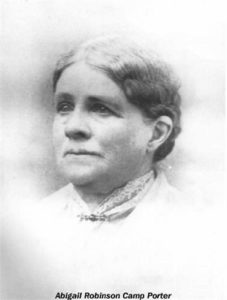Recently, I have been hit with a new ache. I have had back and neck issues since I was sixteen when I herniated a disc in my neck during phy ed class. After a few bad falls and some rear-end accidents, my spine has taken a nosedive in strength and an uphill climb in pain. I now have a new diagnosis, occipital neuralgia, which has me on a new medication Unfortunately, it is taking its sweet time to work. So I have been searching the Internet for natural pain relievers. We have so much to choose from now, capsules, tablets, rub-ons. I find it hard to know what to buy. Every day, we hear new ones advertised on television with all their benefits and scary warnings. Yet, my next protagonist, Abigail, in book 3 of Minnesota Main Street Women, who was born in 1818 and mother to another of my protagonists, has few options that aren’t dangerous to take and do not cause serious side effects or even death when she falls and has a painful concussion.
Families often compiled books of homemade recipes for commonly treated health concerns. From bee stings to dog bites, they could concoct various compounds they had on hand to take the ouch out of the patient’s pain. Sometimes they knew how to use various herbs and roots to apply or seep in tea for relief. Often, they used patent medicines like they could purchase from a snake oil salesman, either which was full of alcohol or morphine, cocaine, or laudanum, or they were of no use at all. Rarely, for many reasons, did they even contact a doctor because of fear or lack of money so nature took its course.
Abigail knows a thing or two about medicines. She is the daughter of a doctor who learned his trade in the early 1800s. He learned by reading many textbooks and studying with other doctors while they all served in the War of 1812. Afterward. he took care of his patients in and around Stowe, Vermont, whether it was helping bring babies into the world, setting broken limbs, prescribing salves, ointments, sore throat medicines, he was a practitioner who practiced caution first. Early in her youth, she follows him to help and learn. She also develops a following of women who want her as their midwife. Once she arrives in Clearwater, Minnesota, to become a housekeeper for the new town situated between two rivers, she helps her brother-in-law in his medical practice as well. She helps him clean wounds, wrap sprained and broken limbs. and prescribes willow bark tea for most pain relief. At times, though, her brother-in-law has to take over and medicate with stronger doses such as alcohol–like whiskey or brandy, laudanum, and for even worst cases, opium.
When her fall causes her to lose conscientiousness, Abigail is an unwilling recipient of laudanum when all other safety measures have been followed and …….. (more to come.)
While we all have had a headache now and again, I am thankful for medical science that can handle headaches, relieve pain and sicknesses from Cancer, and even come up with antibodies to treat Covid.
***NEWS: This Wednesday, April 28 around 10:40, I will be interviewed by Kelly Cordes on “It Matters With Kelly Cordes.” The site is Kelly Cordes – AM 1240 WJON.
***This next weekend, May 1-2, Saturday, and Sunday, I will be selling my books at the Midwest Handmade event in the St. Cloud Event Center from 10-4 each day. Come out and see me, buy a book or two, and enjoy being in public. You’ll need to check out the rules on the site: (3) Midwest Handmade’s MN Artisan Fair 2021 | Facebook.
Happy Spring
Image borrowed from http://www.herbmuseum.ca/files/images/DSC01171.JPG

 Sign by Becky Frank
Sign by Becky Frank




















